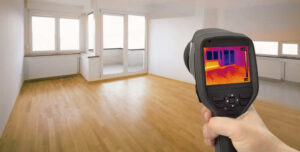Uncover Concealed Water Line Leaks: Six Tested Ways for Detecting
Uncover Concealed Water Line Leaks: Six Tested Ways for Detecting
Blog Article
Nearly everybody has his or her own perception with regards to Leaking water lines.

Early discovery of dripping water lines can minimize a possible calamity. Some little water leakages might not be noticeable.
1. Analyze the Water Meter
Every residence has a water meter. Inspecting it is a proven manner in which assists you uncover leaks. For starters, turn off all the water resources. Ensure no person will certainly flush, make use of the tap, shower, run the washing equipment or dish washer. From there, most likely to the meter as well as watch if it will certainly transform. Since no one is utilizing it, there ought to be no movements. If it relocates, that suggests a fast-moving leak. If you spot no changes, wait a hr or 2 and also inspect back once more. This indicates you may have a sluggish leakage that could also be underground.
2. Examine Water Consumption
If you detect unexpected modifications, despite your usage being the exact same, it suggests that you have leaks in your plumbing system. An abrupt spike in your expense suggests a fast-moving leak.
On the other hand, a stable boost each month, even with the exact same practices, reveals you have a sluggish leakage that's additionally gradually intensifying. Call a plumber to thoroughly examine your property, specifically if you feel a cozy area on your flooring with piping underneath.
3. Do a Food Coloring Test
30% comes from toilets when it comes to water consumption. Test to see if they are running effectively. Decline specks of food shade in the tank as well as wait 10 minutes. If the color in some way infiltrates your dish throughout that time without flushing, there's a leak in between the tank as well as dish.
4. Asses Outside Lines
Do not neglect to examine your outdoor water lines also. Test spigots by connecting a garden tube. Should water seep out of the connection, you have a loosened rubber gasket. Change this as well as make sure all links are tight. If you've obtained a lawn sprinkler, it will help get it expertly analyzed and kept every year. One tiny leakage can waste lots of water as well as spike your water costs.
5. Analyze the scenario and examine
Property owners must make it a habit to check under the sink counters and also inside closets for any kind of bad odor or mold and mildew growth. These two red flags suggest a leakage so prompt attention is required. Doing regular inspections, also bi-annually, can save you from a major problem.
Inspect for stainings and weakening as a lot of pipes and appliances have a life span. If you suspect dripping water lines in your plumbing system, do not wait for it to intensify.
Early discovery of dripping water lines can minimize a potential catastrophe. Some tiny water leaks may not be noticeable. Checking it is a proven means that assists you find leakages. One small leakage can throw away heaps of water and also surge your water costs.
If you believe dripping water lines in your plumbing system, don't wait for it to rise.
WARNING SIGNS OF WATER LEAKAGE BEHIND THE WALL
PERSISTENT MUSTY ODORS
As water slowly drips from a leaky pipe inside the wall, flooring and sheetrock stay damp and develop an odor similar to wet cardboard. It generates a musty smell that can help you find hidden leaks.
MOLD IN UNUSUAL AREAS
Mold usually grows in wet areas like kitchens, baths and laundry rooms. If you spot the stuff on walls or baseboards in other rooms of the house, it’s a good indicator of undetected water leaks.
STAINS THAT GROW
When mold thrives around a leaky pipe, it sometimes takes hold on the inside surface of the affected wall. A growing stain on otherwise clean sheetrock is often your sign of a hidden plumbing problem.
PEELING OR BUBBLING WALLPAPER / PAINT
This clue is easy to miss in rooms that don’t get much use. When you see wallpaper separating along seams or paint bubbling or flaking off the wall, blame sheetrock that stays wet because of an undetected leak.
BUCKLED CEILINGS AND STAINED FLOORS
If ceilings or floors in bathrooms, kitchens or laundry areas develop structural problems, don’t rule out constant damp inside the walls. Wet sheetrock can affect adjacent framing, flooring and ceilings.
https://www.servicemasterbyzaba.com/blog/how-to-detect-water-leakage-in-walls/

I was made aware of that editorial on Locating water leaks from a good friend on our other site. Are you aware of anybody else who is occupied with the niche? Feel free to promote it. We truly appreciate reading our article about Detecting hidden plumbing leaks.
Premium plumbing emergency care here. Report this page